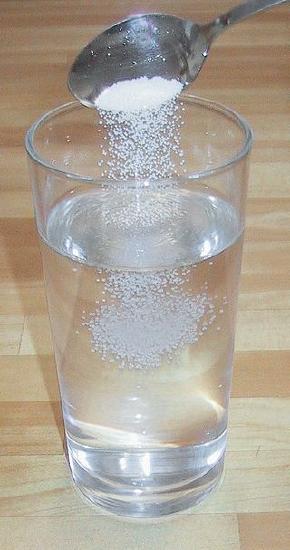9.4: Solutions - Homogeneous Mixtures
- Page ID
- 367836
- Learn terminology involving solutions.
Attractive forces are also important for the formation of solutions. We will discuss why attractive forces are important in one of the subsections of this chapter, but first we will define a few terms that are important for solutions.
The major component of a solution is called the solvent. The minor component of a solution is called the solute. By major and minor we mean whichever component has the greater or lesser presence by mass or by moles. Sometimes this becomes confusing, especially with substances with very different molar masses. However, here we will confine the discussion to solutions for which the major component and the minor component are obvious.
Solutions exist for every possible phase of the solute and the solvent. Salt water, for example, is a solution of solid \(\ce{NaCl}\) in liquid water, while air is a solution of a gaseous solute (O2) in a gaseous solvent (N2). In all cases, however, the overall phase of the solution is the same phase as the solvent. Table \(\PageIndex{1}\) lists some common types of solutions, with examples of each.
| Solvent Phase | Solute Phase | Example |
|---|---|---|
| gas | gas | air |
| liquid | gas | carbonated beverages |
| liquid | liquid | ethanol (C2H5OH) in H2O (alcoholic beverages) |
| liquid | solid | salt water |
| solid | gas | H2 gas absorbed by Pd metal |
| solid | liquid | Hg(ℓ) in dental fillings |
| solid | solid | steel alloys |

A solution is made by dissolving 1.00 g of sucrose (\(\ce{C12H22O11}\)) in 100.0 g of liquid water. Identify the solvent and solute in the resulting solution.
Solution
Either by mass or by moles, the obvious minor component is sucrose, so it is the solute. Water—the majority component—is the solvent. The fact that the resulting solution is the same phase as water also suggests that water is the solvent.
A solution is made by dissolving 3.33 g of \(\ce{HCl(g)}\) in 40.0 g of liquid methyl alcohol (\(\ce{CH3OH}\)). Identify the solvent and solute in the resulting solution.
- Answer
-
solute: HCl(g); solvent: CH3OH
Summary
- Solutions are composed of a solvent (major component) and a solute (minor component).
Contributions & Attributions
This page was constructed from content via the following contributor(s) and edited (topically or extensively) by the LibreTexts development team to meet platform style, presentation, and quality:
Henry Agnew (UC Davis)


